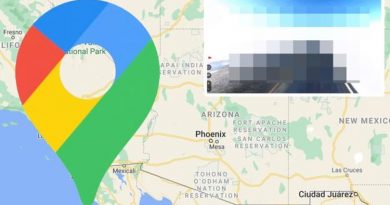9 Best Hikes in Colorado, From Alpine Meadows to Other-Worldly Rock Formations
Colorado’s snow-capped Rocky Mountains may be world-famous, but the state’s landscape is diverse and extends well beyond postcard-perfect peaks and evergreen forests. The Centennial State is also home to reddish-orange rock formations, flat-topped mesas, rolling meadows dotted with wildflowers, crystal-clear alpine lakes, golden-yellow aspen groves, rocky alpine tundras, narrow canyons, and grass-covered prairies.
Hiking is one of the best ways to experience Colorado’s varied terrain—thanks to the more than 39,000 miles of trails of varying lengths, difficulty levels, and scenery spread across the state. With that in mind, we’ve rounded up some of the best hikes in Colorado for exploring everything the state has to offer on two feet. Read on for our picks.
Mohawk Lakes
Located south of Breckenridge, this alpine tundra route starts at the Spruce Creek Trailhead and traverses 6.8 miles round trip past Lower Mohawk Lake and Upper Mohawk Lake. This intermediate trail climbs nearly 2,000 feet of elevation and offers views of the 13,164-foot Mt. Helen and the towering Tenmile Range.
Royal Arch
Boulder is a quick, easy shot out of Denver, and no visit to Boulder is complete without a hike at Chautauqua, the historic park and cultural center that dates back to 1898. A favorite among locals is the hike up to Royal Arch, which offers views of Boulder’s iconic Flatirons and ends at an arched rock formation. Hikers can connect to the Royal Arch Trail from a handful of other trails, all departing from the Chautauqua Trailhead, but the most direct route is 3.4 miles roundtrip and is an intermediate/difficult route.
Fish Creek Falls
The hike to Fish Creek Falls in Steamboat Springs is a popular all-seasons route for beginner to intermediate hikers. The hike to the base of the falls is only a half-mile round trip, so plan to extend your trek to a second waterfall, Upper Fish Creek Falls (around 5 miles roundtrip), or beyond to Long Lake (13 miles roundtrip).
Cathedral Lake
This out-and-back hike south of Aspen is hard, but relatively short at 5.6 miles round trip. Plus, the stunning views are worth it, no matter what time of year you’re hiking. The route gains nearly 2,000 feet of elevation through the alpine meadows, forests, and scree fields of Pine Creek Canyon before arriving at an Instagram-worthy alpine lake (though be sure to read up on Aspen’s “Tag Responsibly” campaign before posting a photo, which encourages travelers not to geotag lesser visited areas to prevent overtourism).
Ouray Perimeter
The 6.5-mile round trip Ouray Perimeter Trail has it all: Panoramic views of Ouray below (nicknamed the “Switzerland of America” for its picturesque environs), waterfalls, bridges, natural “bathtub” pools, cliffs, and caves. This intermediate hike gains 1,600 feet of elevation and, since it’s a loop around town, it can easily be broken into smaller sections if you’re short on time or feeling the altitude.
Arthur’s Rock
Just west of Fort Collins, the 3.4-mile out-and-back Arthur’s Rock Trail inside Lory State Park climbs 1,100 feet and offers views of Horsetooth Reservoir and the Front Range beyond. The route travels through grassy meadows, evergreen trees, craggy rock formations, and massive, smooth boulders.
Rattlesnake Canyon Arches
The 6.2-mile round trip Rattlesnake Canyon Arches Trail outside of Grand Junction is literally off the beaten path—it requires driving a rough-and-tumble 4X4 road or hiking a connector trail—but the views are completely worth it. The high-desert route travels through reddish-orange, Mars-esque rock formations and arches with colorful sandstone layers.
Aspen to Crested Butte
For a more adventurous hike, consider trekking from Aspen to Crested Butte (or vice versa) via the West Maroon Creek Trail and the West Maroon Pass Trail. Though these two mountain towns are more than 100 miles apart by car, you can hike between them in less than a day. From Aspen, this 10.5-mile one-way thru-hike starts at the iconic Maroon Bells-Snowmass Wilderness Area (home to one of North America’s most photographed scenes) and heads up over Maroon Pass at 12,465 feet. The route then winds down through high alpine meadows and open valleys before arriving on the Crested Butte side. Many backpackers camp out along the trail before turning around and hiking back. There are also shuttles from the trailhead to several Crested Butte hotels, if you could use a hot shower and a night off your feet before making the return trip.
Peak 10
Coloradans are obsessed with hiking 14ers (mountains that stand more than 14,000 feet tall). But because of this fascination with peak-bagging, the trails that climb them also tend to be more crowded, which is why summiting a 12er or 13er can be more enjoyable. Located near Breckenridge, Peak 10 stands at 13,639 feet and can be accessed via a handful of different routes depending on the season (including some that take you through the ski resort). For a longer, more challenging day, connect Peak 10 to other summits like Crystal Peak or Peak 9.
Looking for more of the best hikes in Colorado? It is the first state in the nation to map all public trails and compile them into an easy-to-use app and website called COTREX. Users can sift through Colorado trails with an array of helpful filters, including wheelchair accessibility.
Source: Read Full Article



